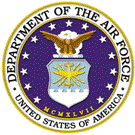United States Department of Defense

United States Air Force: Publications
Document Type
Article
Date of this Version
1999
Citation
Published by the United States Air Force, September 1999
Abstract
Throughout the military history of the twentieth century, the role of aerospace forces has become more predominant. Today, wars typically start, are prosecuted, and reach their decisive culminating point--whether surrender of a foe, agreement to a ceasefire, or the ceasing of combat operations--thanks to air action. Given these circumstances, to lose control of the air is to lose a war, particularly in an era (as we now are in since the end of the Cold War) when deployable overseas forces are small, and, thus, particularly vulnerable to the tremendous leverage an opponent gains by sudden and swift air attack. If fighting under near “parity” conditions, the battle for control of the air takes on even more critical importance: a nation fighting an equivalent, or near-equivalent, forces finds that in the absence of clear control of the air, all of its other military operations are constrained.


Comments
United States government work. Public domain